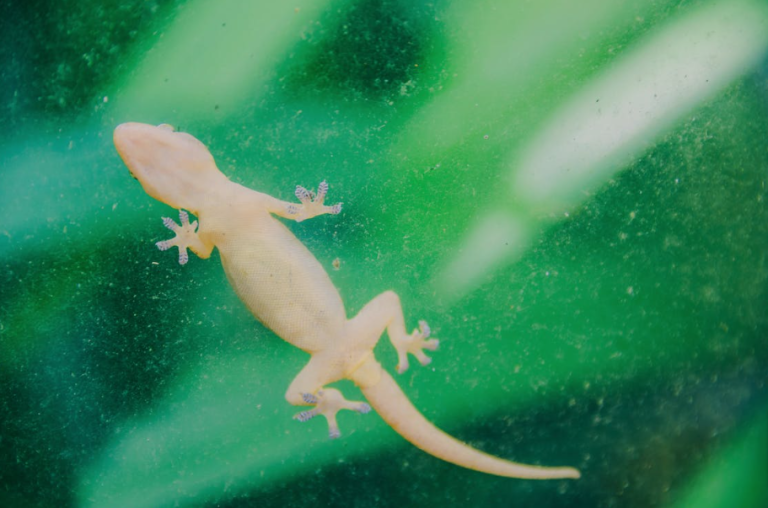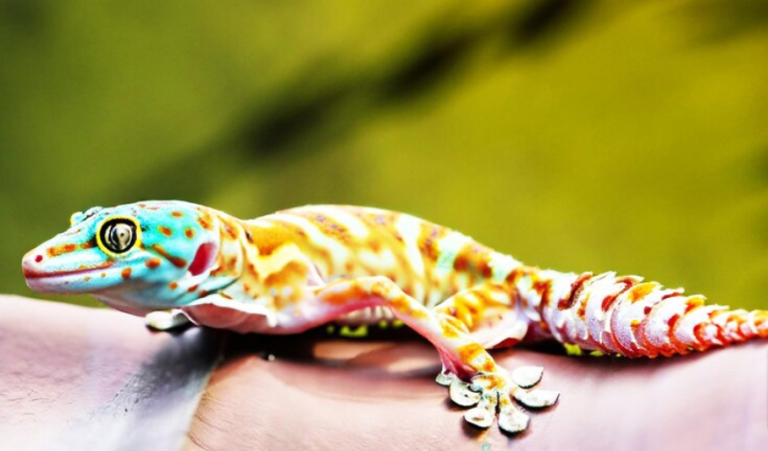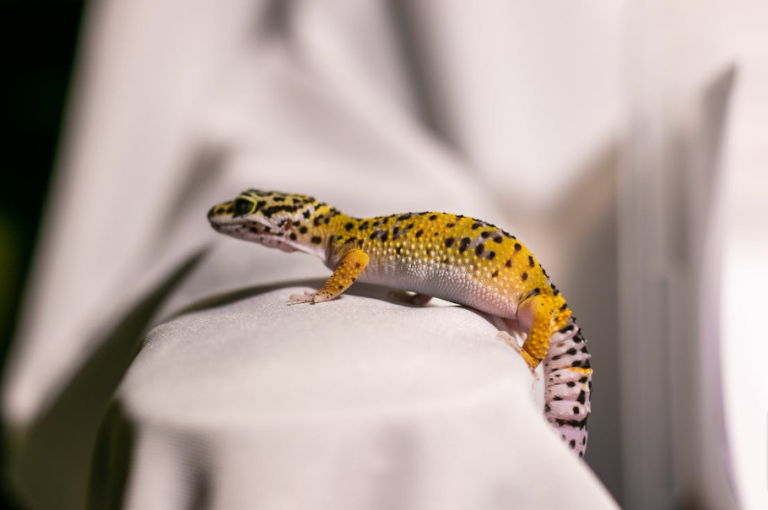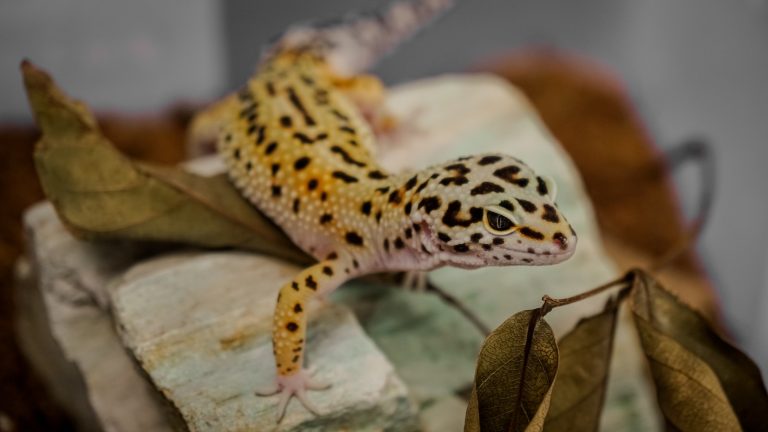When it comes to the world of reptiles, geckos are among the most captivating creatures. Two popular choices for reptile enthusiasts are the Fat Tailed Gecko and the Leopard Gecko. In this article, we will delve into the unique characteristics, care requirements, and fascinating facts about these two distinct gecko species. Whether you’re a seasoned reptile keeper or a novice, this guide will help you make an informed decision about which gecko is the right fit for you.
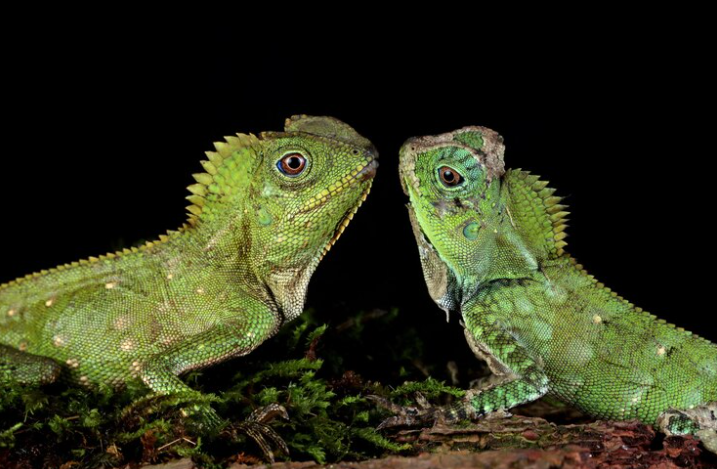
Fat Tailed Gecko vs Leopard Gecko
In this section, we will explore the key differences between the Fat Tailed Gecko and the Leopard Gecko. These differences will help you decide which gecko species aligns with your preferences and lifestyle.
Appearance
- Fat Tailed Gecko The Fat Tailed Gecko, scientifically known as Hemitheconyx caudicinctus, is known for its stout body and, as the name suggests, a plump, fat tail. Their coloration varies, often featuring shades of brown, orange, or gray. These geckos are relatively small, typically reaching 7 to 9 inches in length.
- Leopard Gecko Leopard Geckos, scientifically termed Eublepharis macularius, are slender and have a distinct appearance. They are easily recognizable by their vibrant yellow coloration with dark spots, reminiscent of a leopard’s coat. Leopard Geckos are slightly larger, growing up to 10 inches in length.
Habitat and Range
- Fat Tailed Gecko Originating from West Africa, Fat Tailed Geckos thrive in arid regions. They are nocturnal creatures and are often found in rocky crevices and burrows to escape the heat of the day.
- Leopard Gecko Leopard Geckos also hail from arid regions, primarily Afghanistan and Pakistan. They share a preference for rocky environments but can adapt well to captivity.
Behavior and Temperament
- Fat Tailed Gecko Fat Tailed Geckos are known for their calm and docile nature. They are less active during the day and prefer to emerge at night, making them an excellent choice for those who want a low-maintenance pet.
- Leopard Gecko Leopard Geckos are equally mild-mannered and are renowned for their ease of handling. They are also nocturnal creatures and tend to be more active in the evening.

Diet
- Fat Tailed Gecko These geckos primarily feed on insects, such as crickets and mealworms. They have a slower metabolism and do not require frequent feeding.
- Leopard Gecko Leopard Geckos share a similar diet, consisting mainly of insects. They are known for their voracious appetites and may need more frequent feedings compared to Fat Tailed Geckos.
Lifespan
- Fat Tailed Gecko Fat Tailed Geckos typically live for 15 to 20 years when properly cared for.
- Leopard Gecko Leopard Geckos have a similar lifespan, with individuals often reaching 15 to 20 years in captivity.
Care and Enclosure
- Fat Tailed Gecko To ensure a comfortable habitat, provide a secure enclosure with ample hiding spots and a temperature gradient. Maintain a temperature range of 75-85°F (24-29°C) during the day and a slight drop at night.
- Leopard Gecko Leopard Geckos require similar care, including a secure enclosure, temperature gradient, and hiding spots. The temperature range should be 88-90°F (31-32°C) during the day and a slight drop at night.
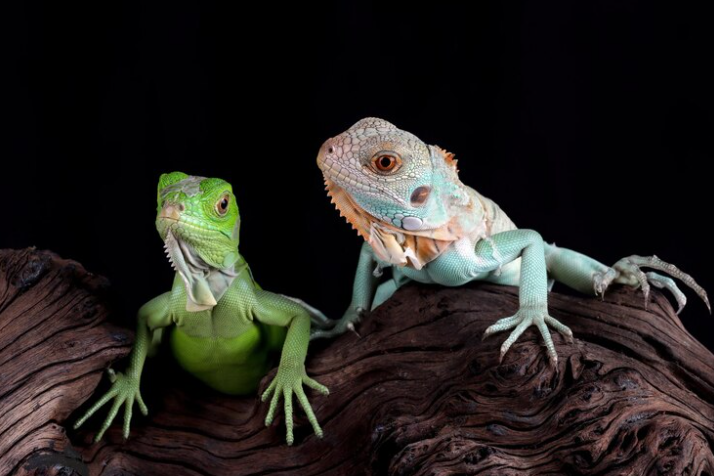
Fat Tailed Gecko vs Leopard Gecko: Frequently Asked Questions
Q: What is the average size of a Fat Tailed Gecko?
A: Fat Tailed Geckos typically reach a length of 7 to 9 inches.
Q: Are Leopard Geckos good for beginners?
A: Yes, Leopard Geckos are an excellent choice for beginner reptile keepers due to their docile nature.
Q: How often should I feed my Leopard Gecko?
A: Leopard Geckos should be fed every other day, with a diet primarily consisting of insects.
Q: Do Fat Tailed Geckos require UVB lighting?
A: Unlike some reptiles, Fat Tailed Geckos do not require UVB lighting, but they do need appropriate heating.
Q: Can I house multiple Leopard Geckos together?
A: While it is possible to house multiple Leopard Geckos together, it is essential to monitor their interactions carefully to prevent aggression.
Q: Are Fat Tailed Geckos good for handling?
A: Fat Tailed Geckos are generally calm and can be handled, but they may be more inclined to burrow and hide.
Conclusion
In the world of geckos, both the Fat Tailed Gecko and the Leopard Gecko offer unique and enjoyable experiences for reptile enthusiasts. Your choice ultimately depends on your preferences in terms of appearance, behavior, and care requirements. Whichever gecko you choose, providing proper care and attention will ensure a happy and healthy companion.

